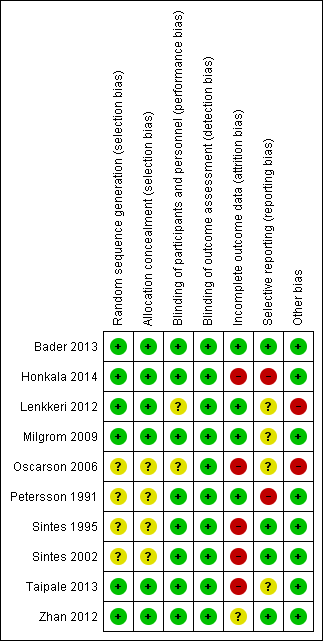Contenido relacionado
Revisiones y protocolos relacionados
Tanya Walsh, Helen V Worthington, Anne‐Marie Glenny, Valeria CC Marinho, Ana Jeroncic | 4 marzo 2019
Valeria CC Marinho, Lee-Yee Chong, Helen V Worthington, Tanya Walsh | 29 julio 2016
Wafa Kashbour, Puneet Gupta, Helen V Worthington, Dwayne Boyers | 4 noviembre 2020
Valeria CC Marinho, Helen V Worthington, Tanya Walsh, Jan E Clarkson | 11 julio 2013
Stéphanie Tubert‐Jeannin, Candy Auclair, Emmanuel Amsallem, Paul Tramini, Laurent Gerbaud, Christiane Ruffieux, Andreas G Schulte, Martin J Koch, Myriam Rège‐Walther, Amid Ismail | 7 diciembre 2011
Philip Riley, Thomas Lamont | 5 diciembre 2013
Valeria CC Marinho, Julian PT Higgins, Aubrey Sheiham, Stuart Logan | 26 enero 2004
Valeria CC Marinho, Julian PT Higgins, Aubrey Sheiham, Stuart Logan | 26 enero 2004
Valeria CC Marinho, Julian Higgins, Stuart Logan, Aubrey Sheiham (deceased)a | 20 enero 2003
Rena Takahashi, Erika Ota, Keika Hoshi, Toru Naito, Yoshihiro Toyoshima, Hidemichi Yuasa, Rintaro Mori, Eishu Nango | 23 octubre 2017
Podcast relacionado
Respuestas clínicas Cochrane
Mojtaba Dorri | 28 marzo 2016
Mojtaba Dorri | 28 marzo 2016













